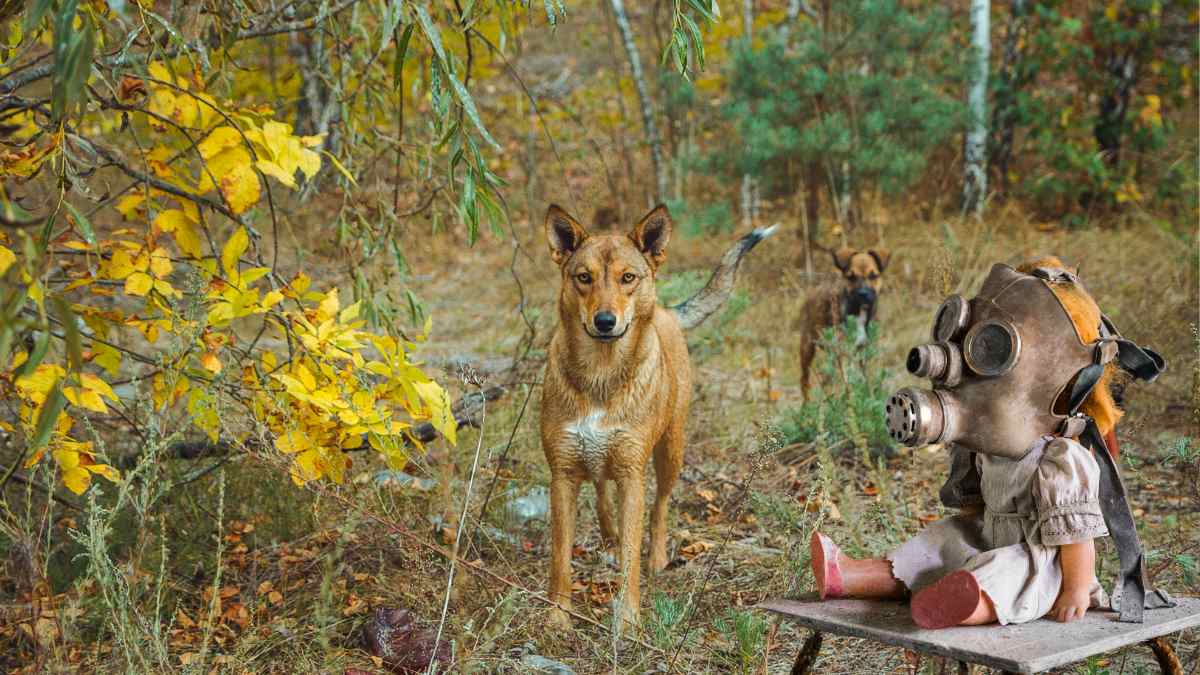The 1986 meltdown at the Chornobyl Nuclear Power Plant led to the release of more than 5000 petabecquerels of radionuclides. This environmental crisis shaped the region’s future, resulting in a vast Exclusion Zone around the destroyed reactor.
People evacuated, leaving behind abandoned buildings, industrial materials, and aging military infrastructure. Over time, the area began to recover ecologically, as wildlife returned to an environment that was once deemed too contaminated for safe habitation.
Scientists from many fields continue to investigate what happens to plants and animals that make this zone their home. Microorganisms, parasites, and insects that live on these hosts can reveal hidden health risks and ecological imbalances. Studying ticks and the diseases they carry is a priority because their biting behavior can transmit pathogens to multiple species, including people.
Ticks at the meltdown site
Ixodes ricinus and Dermacentor reticulatus are two tick species often found on wild or free-ranging dogs in Eastern Europe. Investigators in Ukraine have sampled ticks at various sites to see if certain pathogens appear more frequently near the defunct power plant or in regions slightly farther away.
Some outcomes have raised concerns about local wildlife health. Not every organism responds the same way to radiation exposure, making it important to see if these ticks spread infections differently as they move between hosts in the Exclusion Zone.
Wild dogs in this territory are known to roam and mix with wildlife that can host ticks. A deeper look into the dogs themselves gives a better understanding of the potential for pathogen transmission. Ticks latch onto these animals for a blood meal, pick up or pass on pathogens, and can continue doing so whenever they find a new host.
One group, many findings
Researchers recently examined ticks gathered from canines at two locations: (a) right next to the Nuclear Power Plant and (b) in Chornobyl City, located about 10 miles away.
“Overall, 56.9% of I. ricinus ticks were positive for at least one pathogen.” stated Dr. Dillon from the College of Veterinary Medicine at North Carolina State University.
Different microbes were seen in the tick populations. Those results hint at complex interactions among wildlife, environment, and people who visit or work in the area. While prior studies in the region had looked at radiation impacts on large animals, there was less information on these pests’ behavior and infections at multiple points in the zone.
Some species of ticks are known vectors for bacteria, parasites, and other microbes that can cause serious disease in animals and people. A slight uptick in infection rates at a specific location can have broad consequences, since ticks do not always limit themselves to one host.
Close proximity to contaminated or overgrown areas often increases the chance of tick activity and may produce different infection patterns in each tick population.
Dogs and their infection rates
Upon examining blood samples from the dogs, researchers identified an unexpected trend in the presence of specific pathogens. Dr. Dillon from North Carolina State University’s College of Veterinary Medicine highlighted that dogs at the NPP showed a much lower prevalence of A. phagocytophilum (1.8%) compared to those at CC (11.7%).
This outcome stands apart from what was observed in the ticks at the same two sites. Studies suggest that external factors, like localized chemical waste or continued radiation exposure, might alter how pathogens and hosts interact. Variations in immunity, overall health status, or access to care can also influence whether dogs test positive.
Several hundred free-breeding dogs now inhabit the Exclusion Zone. They are likely descendants of pets left behind during the evacuation. Some receive food or basic veterinary attention from visiting scientists and volunteers.
Specific health interventions might reduce a dog’s risk of catching certain infections, but those measures do not always target every tick-borne disease. Variations in care can cause different infection rates to appear in dog groups that are just a few miles apart.
Looking ahead
Researchers are focused on how ticks, their hosts, and the environment interlock. Examining tick presence in wild or semi-wild animals helps reveal signs of infectious hazards, which can threaten various species over the long term.
Wildlife specialists may look at how local deer, rodents, and other tick hosts affect the chances of disease in dogs or in visitors passing through. More genetic and ecological research might uncover whether higher levels of contamination around the power plant encourage different patterns of tick distribution or lower the dogs’ likelihood of infection with certain pathogens.
Findings from ongoing monitoring could offer practical advice for veterinary teams, park workers, and tourists entering the area. Although much of the Exclusion Zone remains off-limits, people do come in to handle construction, cleanup, or scientific activities.
When ticks contain many pathogens, that raises questions about the risk to anyone exposed to them. Understanding where infections thrive helps inform strategies for better medical surveillance and safety guidelines. It might also show how creatures adapt to harsh environments and pass that survival knowledge through generations.
Continued observation of Chornobyl’s dogs could broaden our view of how biology shifts in places affected by industrial disasters. Studies bridging the gap between animal health, ticks, and contamination are key for those exploring the complexities of a landscape still recovering decades after its sudden devastation.
References
International Atomic Energy Agency. The Chernobyl Accident: Updating of INSAG-1. 1992. https://www-pub.iaea.org/MTCD/Publications/PDF/Pub913e_web.pdf
Møller AP, Mousseau TA. Strong effects of ionizing radiation from Chernobyl on mutation rates. Sci Rep. 2015;5:836. https://www.sciencedirect.com/science/article/abs/pii/S000632071100317X
Dillon MN, Qurollo BA, Thomas R, et al. Contrasting pathogen prevalence between tick and dog populations at Chornobyl. Parasites Vectors. 2024;17:470. https://pubmed.ncbi.nlm.nih.gov/39551770/







